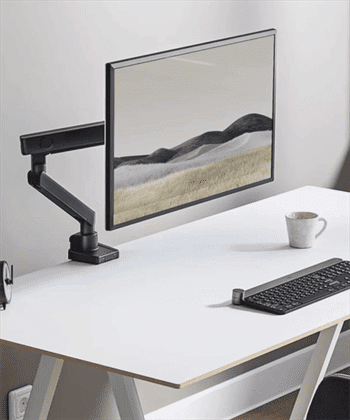Ah, the squeaky office chair. It starts as a minor annoyance, but soon enough, it’s driving you up the wall. Whether you’re on an important video call or just trying to focus on your work, that constant squeak can be incredibly distracting. But don’t worry, I’m here to help you get to the bottom of the problem and show you how to fix your squeaky office chair once and for all.

Why is My Chair So Squeaky?
Before we dive into the solutions, let’s first understand why your chair is making that noise. A squeaky office chair can be caused by several factors, including loose screws, worn-out parts, or lack of lubrication. Identifying the source of the squeak is crucial to effectively fixing it.
Identifying the Source of the Squeak
To start, you need to pinpoint where the noise is coming from. Sit in your chair and gently rock back and forth, side to side, and swivel around. Pay close attention to the sounds and try to locate the exact area that’s causing the noise.
Common Causes of Squeaky Office Chairs
- Loose Screws and Bolts: Over time, the screws and bolts in your chair can become loose, leading to squeaks.
- Lack of Lubrication: Moving parts like the swivel mechanism and wheels need proper lubrication to function smoothly.
- Worn-Out Parts: Components like the gas lift cylinder, wheels, and bearings can wear out and start making noise.
Tools You’ll Need
Before you start fixing your chair, gather the necessary tools. Having the right tools on hand will make the process much smoother and quicker.
Basic Tools Required

- Screwdriver (Phillips and flat-head)
- Allen wrench set
- Lubricant (WD-40 or silicone spray)
Optional Tools for Better Results
- Adjustable wrench
- Replacement screws and bolts
- Cleaning cloths
Safety First!
Fixing a squeaky office chair involves some disassembly and handling of various components. It’s important to take safety precautions to avoid injury or damage to the chair.
Precautions Before Starting
- Work in a Well-Lit Area: Ensure you have good lighting to see what you’re doing.
- Use a Stable Surface: Place your chair on a flat, stable surface to prevent it from tipping over.
- Wear Protective Gear: If necessary, wear gloves to protect your hands from sharp edges or grease.
Ensuring a Safe Work Environment
Clear your workspace of any clutter and make sure you have enough room to move around. Keep tools and small parts organized to prevent losing anything important.
Step-by-Step Guide to Fixing a Squeaky Office Chair

Now that you’re prepared, let’s get into the step-by-step process of fixing your squeaky office chair.
Step 1: Inspecting the Chair
Visual Inspection
Start by giving your chair a thorough visual inspection. Look for any obvious signs of wear and tear, such as cracks or broken parts.
Testing Different Movements
Move the chair in different directions to identify which parts are causing the squeak. This will help you focus on the specific areas that need attention.
Step 2: Tightening Screws and Bolts
Locating Loose Screws
Check all the screws and bolts on your office chair, especially around the base, seat, and backrest. Loose screws are a common cause of squeaks.
How to Properly Tighten Screws
Use the appropriate screwdriver or Allen wrench to tighten any loose screws. Be careful not to overtighten, as this can strip the threads and cause more problems.
Step 3: Lubricating Moving Parts
Types of Lubricants to Use
Not all lubricants are created equal. For office chairs, it’s best to use a silicone spray or a product like WD-40. Avoid using thick grease, as it can attract dust and dirt.
How to Apply Lubricant
Spray the lubricant on all moving parts, including the swivel mechanism, wheels, and any joints. Wipe off any excess with a clean cloth.
Step 4: Fixing the Gas Lift Cylinder

Identifying Gas Lift Issues
If your chair is squeaking when you adjust the height, the gas lift cylinder might be the culprit if you want to know remove cyliender from chair go to our blogs. Check for any visible damage or wear.
Steps to Fix or Replace the Cylinder
If the cylinder is damaged, you may need to replace it. Follow the manufacturer’s instructions for removing and installing a new cylinder. If it’s just squeaky, applying lubricant might solve the problem.
Step 5: Addressing the Wheels
Checking for Wheel Problems
Wheels can become squeaky if they’re dirty or worn out. Inspect each wheel for signs of damage or debris.
Solutions for Squeaky Wheels
Clean the wheels thoroughly and apply a small amount of lubricant to the axles. If the wheels are damaged, consider replacing them with new ones.
Step 6: Examining the Seat and Backrest
Common Issues with the Seat and Backrest
The seat and backrest can also be sources of squeaks. Check for loose screws, worn-out padding, or any other issues.
How to Fix Squeaks in the Seat and Backrest
Tighten any loose screws and apply lubricant to the joints where the seat and backrest connect to the frame. If the padding is worn out, you may need to replace it.
Preventive Maintenance Tips
To keep your chair in good condition and prevent future squeaks, follow these preventive maintenance tips.
Regular Inspections
Perform regular inspections to catch any issues early. Tighten screws and bolts as needed and check for signs of wear.
Routine Lubrication
Keep your chair’s moving parts well-lubricated. This will reduce friction and prevent squeaks from developing.
Proper Usage of the Chair
Avoid putting excessive weight on the chair or using it in ways it wasn’t designed for. Proper usage will extend its lifespan and reduce the likelihood of squeaks.
When to Consider Professional Help
Sometimes, despite your best efforts, the squeak persists. In such cases, it might be time to seek professional help.
Recognizing When You Can’t Fix It Yourself
If you’ve tried all the steps and the squeak is still there, the problem might be more serious. Issues with the internal mechanisms or structural components often require professional attention.
How to Find a Professional
Look for a reputable furniture repair service in your area. Check reviews and ask for recommendations to find someone who can effectively fix your chair.
Conclusion
Fixing a squeaky office chair can seem daunting, but with the right approach, you can solve the problem and get back to work in peace. Regular maintenance and proper usage are key to keeping your chair in top condition. So, roll up your sleeves, grab your tools, and say goodbye to that annoying squeak!
Frequently Asked Questions (FAQs)
Q.1. How often should I lubricate my office chair?
Lubricate your office chair every 6 to 12 months, or whenever you notice it starting to make noise.
Q.2. Can I use any type of oil to fix the squeak?
It’s best to use a silicone spray or WD-40. Avoid using thick oils or greases that can attract dust and dirt.
Q.3. What should I do if the squeak comes back?
If the squeak returns, recheck the screws and bolts, and reapply lubricant as needed. Persistent issues might require professional help.
Q.4. Are all office chairs prone to squeaking?
Not all office chairs squeak, but many can develop squeaks over time due to wear and tear, loose parts, or lack of maintenance.
Q.5. How long should an office chair last?
With proper maintenance, a good quality office chair should last between 7 to 10 years.

 Workstations
Workstations Monitor Arms
Monitor Arms Dividers
Dividers Storage
Storage Seatings
Seatings Accessories
Accessories


